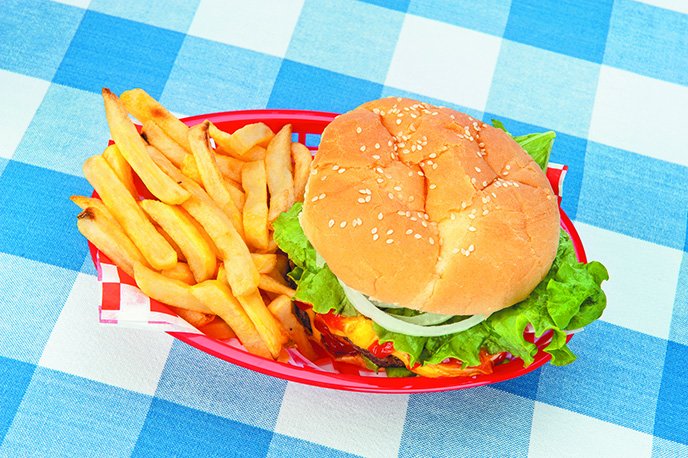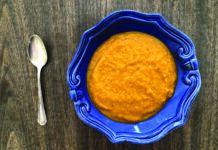If you’re eating out often, you’re probably overdoing calorie consumption – even if you avoid fast-food restaurants. Meals consumed at fast-food restaurants have been singled out as culprits in America’s obesity epidemic. But a new study reports that both chain and local restaurants are routinely serving far more than should be consumed in a single meal – often more than you should eat in a whole day.
The study, published in the Journal of the American Academy of Nutrition and Dietetics, found that 92% of 364 measured restaurant meals from both large-chain and non-chain (local) restaurants exceeded recommended calorie requirements for a single meal. In 123 restaurants in three cities across America, the research team found that a single meal serving – even before adding beverages, appetizers or desserts – sometimes exceeded the caloric requirements for an entire day.
“These findings make it clear that making healthy choices while eating out is difficult because the combination of tempting options and excessive portions often overwhelm our self-control,” says senior author Susan B. Roberts, PhD, director of Tufts’ HNRCA Energy Metabolism Laboratory.
“Although fast-food restaurants are often the easiest targets for criticism because they provide information on their portion sizes and calories, small restaurants typically provide just as many calories, and sometimes more,” she adds. “Favorite meals often contain three or even four times the amount of calories a person needs. Although in theory we don’t have to eat the whole lot, in practice most of us don’t have enough willpower to stop eating when we have had enough.”
THINKSTOCK

CALORIES BY CUISINE: Researchers analyzed the calorie content of frequently ordered meals in both local restaurants and their large-chain equivalents in three separate locations: Boston, San Francisco and Little Rock, Ark. The data were collected between 2011 and 2014 by comparing the meals against human calorie requirements and USDA food database values. The cuisines studied included American, Chinese, Greek, Indian, Italian, Japanese, Mexican, Thai and Vietnamese fare.
Meals from non-chain restaurants contained an average of 1,205 calories, an amount that was not significantly different from equivalent meals from large-chain restaurants. But type of cuisine made a significant difference in non-chain calories: Three of the most popular cuisines – American, Chinese and Italian – had the highest calorie counts with an average of 1,495 calories per meal.
SUPERHUMAN SELF-CONTROL: “Oversize servings lead a lot of dieters to avoid most restaurants entirely, or stick to items like salads that they know are served in reasonable portions,” says co-author William Masters, PhD, professor of food economics at Tufts’ Friedman School. “Standard meals are sized for the hungriest customers, so most people need superhuman self-control to avoid overeating.”
He adds, “There is a gender dimension here that is really important: Women typically have a lower caloric requirement than men, so on average need to eat less. Women, while dining out, typically have to be more vigilant.”
Masters believes that local ordinances empowering customers to order partial portions at partial prices would lead restaurants to adjust their default sizes towards what the average customer wants, rather than catering to the hungriest person. “Customers could then order anything on the menu in a more appropriate size, and be able to eat out more often without weight gain.”
BLAME BIOLOGY: While most people blame themselves for having weak willpower when they eat more than they need while dining out, Roberts cites our biology as the cause. She explains, “More than 100 years ago the Russian scientist Ivan Pavlov received the first Nobel Prize awarded for integrated systems physiology for discovering the ‘cephalic phase of digestion,’ which is basically a mechanism designed to make us hungry and tempted when there is available food for the taking.
“All we have to do is see and smell food and our sympathetic nervous system revs up, insulin secretion drops blood glucose and our stomach relaxes – the goal of these physiological changes being to prepare us to eat all the food within reach,” Roberts says. “So we order our favorite dishes because that is what tempts us, and then we eat more than we need because the portion is too large.”
This study extends Roberts and her research team’s previous research work on restaurant portion sizes and calorie information. A study they published in JAMA in 2011 compared calories in 269 food items from fast-food and sit-down chain restaurants. It found that the items suitable for people being careful with their weight – choices with the fewest calories—were not accurately described and in fact contained more calories than stated.
TO LEARN MORE: Journal of the American Academy of Nutrition and Dietetics –
http://dx.doi.org/10.1016/j.jand.2015.11.009#sthash.EbI4KD2q.dpuf
Avoid overdoing it when eating out by not overordering; if you want an appetizer, skip dessert, and vice versa. (Or considering making one or two appetizers your entrée, depending on size.) Avoid sugar-sweetened beverages and remember that alcoholic beverages contain calories, too. Tufts Susan B. Roberts advises asking for half or even two-thirds to be boxed before your portion arrives at the table. To keep your appetite in check, try having a piece of fruit before heading out for a meal.




















